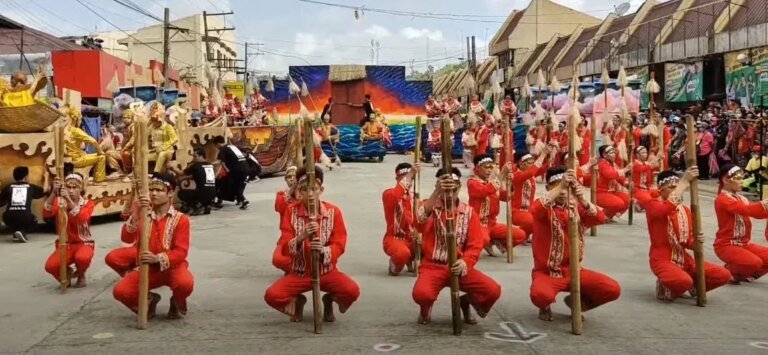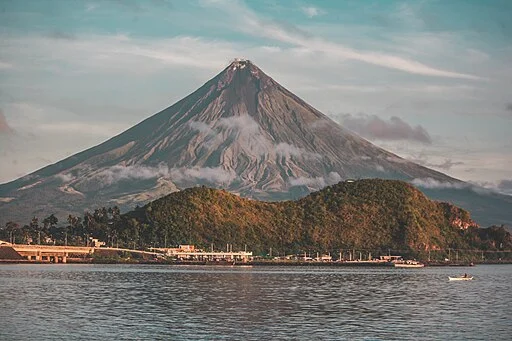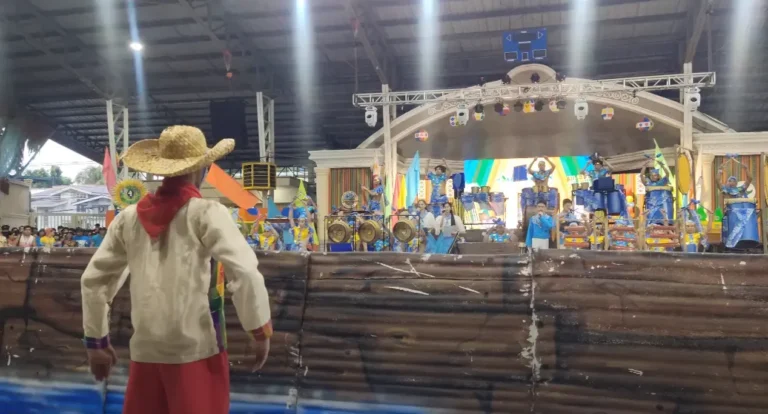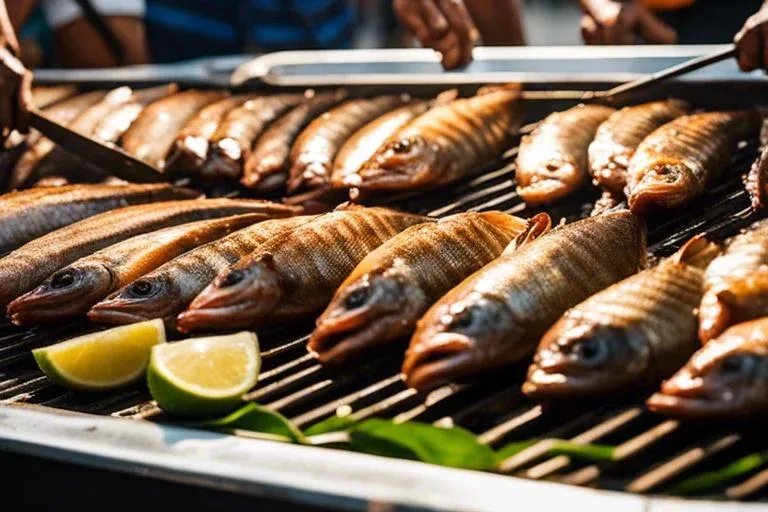Best Tips for Sinulog Festival: Cebu Festival Guide
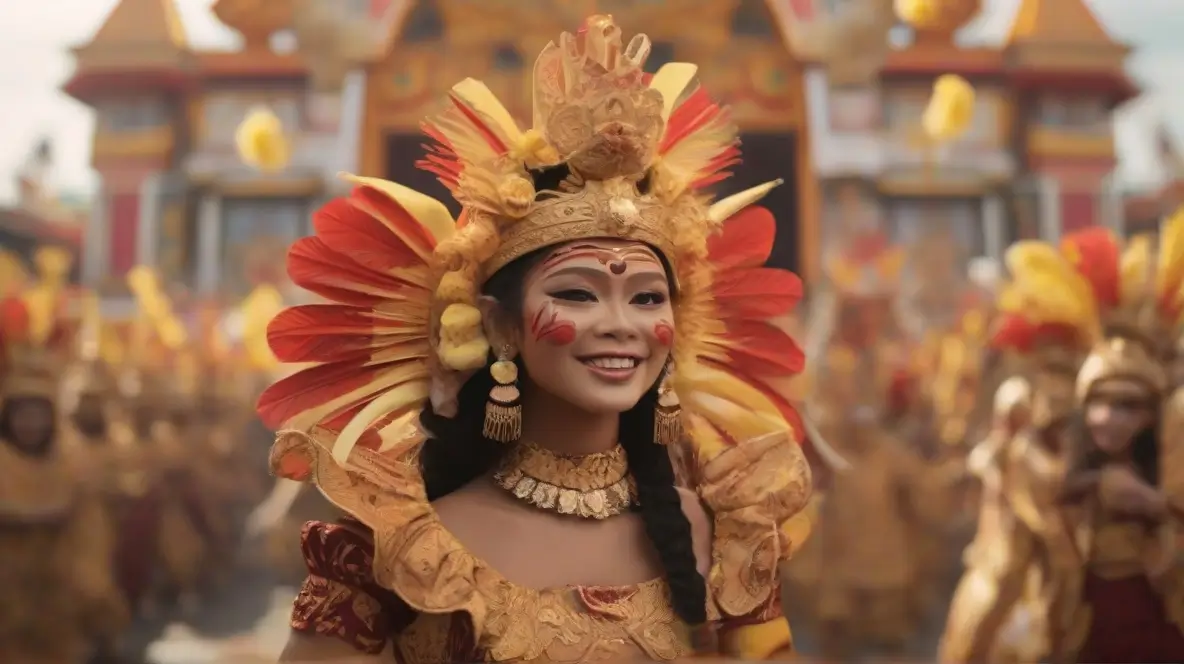
Are you ready to experience the electrifying energy and vibrant culture of the Sinulog Festival in Cebu?
As one of the most anticipated and biggest festivals in the Philippines, Sinulog is a must-see event for locals and tourists alike. Whether you’re a first-time attendee or a seasoned festival-goer, it’s essential to be well-prepared for the festivities.
In this comprehensive guide, we’ll provide you with the top tips and insider advice to ensure that you have an unforgettable time at the Sinulog Festival. From the best viewing spots for the grand parade to essential safety precautions, we’ve got you covered.

Preparing For Your Trip
Any trip to the Sinulog Festival in Cebu requires careful planning and preparation. To ensure that you have the best experience possible, it’s important to make sure you have everything you need well in advance of your trip.
Best Time To Visit For Sinulog Festival
When planning your trip to the Sinulog Festival, it’s essential to consider the best time to visit.
The festival takes place every year on the third Sunday of January, so this is the ideal time for you to experience the vibrant energy and cultural richness of the event.
However, it’s important to note that this is also the peak tourist season, so make sure to book your accommodations and transportation well in advance to avoid any inconveniences.
What to Pack for the Festival
When preparing for the Sinulog Festival in Cebu, it is important to pack a few essential items. Here is a suggested packing list:
- Comfortable clothing: Since the festival involves lots of dancing and walking, pack lightweight and breathable clothing such as t-shirts, shorts, and skirts. It is also a good idea to bring a hat or cap to protect yourself from the sun.
- Comfortable footwear: Choose comfortable shoes or sandals that are suitable for long hours of walking and dancing. Make sure they are sturdy and provide good support.
- Sun protection: The festival takes place outdoors, so don’t forget to pack sunscreen with a high SPF to protect your skin from the sun’s rays. Sunglasses and a portable umbrella can also be handy.
- Water bottle: Staying hydrated is important during the festival, so bring a refillable water bottle to keep yourself hydrated throughout the day.
- Cash and identification: It’s always a good idea to carry some cash, as well as your identification documents such as your passport or ID card.
- Camera or smartphone: Capture the vibrant moments of the festival by bringing a camera or smartphone with a good camera. Don’t forget to bring extra batteries or a portable charger.
- Snacks: Pack some snacks to keep you energized during the festival, such as granola bars, fruits, or trail mix.
- Rain gear: As the festival takes place in January, there is a chance of rain. Pack a lightweight rain jacket or poncho to stay dry in case it rains.
- Small backpack or bag: A small backpack or bag will come in handy to carry your belongings throughout the festival.
Remember to check the specific guidelines and restrictions provided by the festival organizers before packing to ensure you are prepared for a fun and memorable Sinulog Festival experience!
Experiencing Sinulog
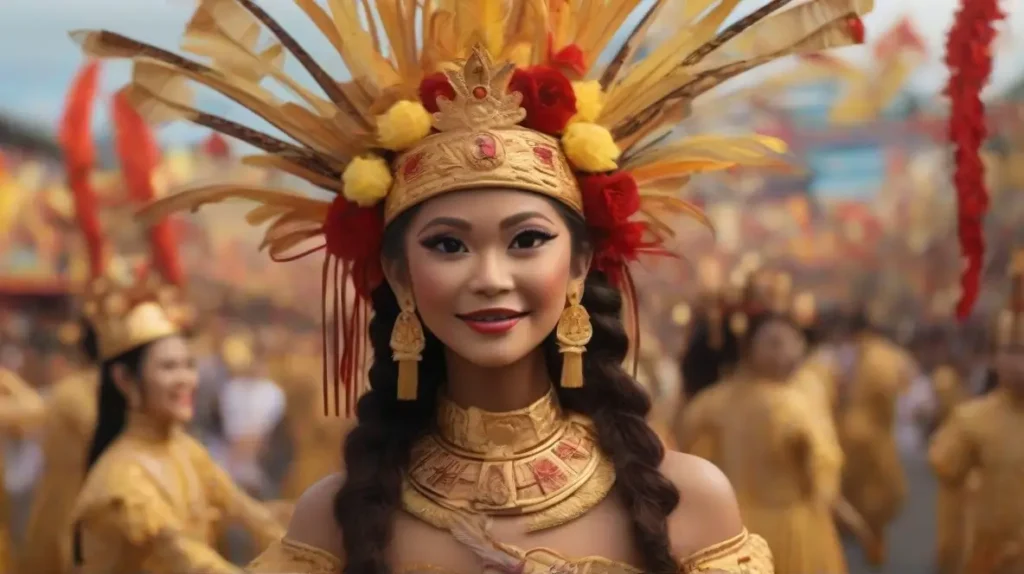
Experiencing Sinulog is a one-of-a-kind adventure that you do not want to miss.
The vibrant colours, pulsating music, and electric atmosphere are something that you have to experience at least once in your lifetime. As you immerse yourself in the festivities, you will feel the energy of thousands of people coming together to celebrate this iconic festival.
You will be surrounded by locals and travellers alike, all joining in the revelry and enjoying the unique culture of Sinulog.
Key Events During Sinulog
During Sinulog, you can expect a series of events and activities that will keep you entertained and engaged.
From the grand parade featuring elaborately dressed performers and floats to the street parties that go on until the early hours of the morning, there is always something exciting happening.
The highly-anticipated street dancing competition is a highlight of the festival, showcasing the energetic and dynamic performances of the different contingents. You simply cannot miss the fervor and passion that radiates from every corner of the city during this time.
Cultural Etiquette and Practices
When participating in Sinulog, it’s important to be mindful of the cultural etiquette and practices observed during the festival.
Respect for the locals and their traditions is paramount, so remember to be courteous and appreciative as you partake in the festivities.
You will also witness various religious rituals and customs during the festival, so it’s essential to be mindful and respectful of these practices. As a visitor, embracing the local customs and traditions will enhance your overall experience and foster a deeper appreciation for the rich cultural heritage of Sinulog.
Making the Most of the Festival
Lastly, to make the most of your Sinulog experience, make sure to immerse yourself in the festival’s vibrant energy and rich cultural traditions.
Engage with the locals, try the traditional food, and don’t be afraid to join in the dancing and merriment.
Must-Visit Spots During Sinulog
When attending the Sinulog Festival, be sure to visit the Basilica Minore del Santo Niño, the historic church where the miraculous image of the Santo Niño is enshrined.
You should also explore Fuente Osmeña Circle, a central gathering place for festival activities, and Colon Street, the oldest street in the Philippines where you can experience the local culture and hospitality.
Tips for Navigating the Crowds and Enjoying Safely
As you navigate the crowded streets during the Sinulog Festival, it’s essential to stay aware of your surroundings and keep your belongings secure.
Make sure to stay hydrated and wear sunscreen to protect yourself from the sun. Additionally, consider carrying a portable phone charger in case your battery runs low. Avoid isolated areas, take note of emergency exits, and always have a meeting point in case you get separated from your group.
Recognizing the signs of exhaustion or dehydration in yourself and others is important for a safe and enjoyable festival experience.
- Stay hydrated and wear sunscreen
- Keep your belongings secure
- Carry a portable phone charger
- Avoid isolated areas and take note of emergency exits
Beyond the Festival
Despite the grandeur and excitement of the Sinulog Festival, Cebu has much more to offer once the festivities come to an end.
From stunning beaches to mouth-watering local delicacies, there are plenty of ways to extend your trip and make the most of your time in this vibrant city.
History of Cebu
Cebu is a province located in the Central Visayas region of the Philippines. It has a rich history that dates back to pre-colonial times. Here is a brief overview of the history of Cebu:
- Pre-colonial Era: Before the arrival of the Spanish colonizers, Cebu was already inhabited by indigenous people known as the Cebuanos. They had a thriving trade network with neighbouring islands and engaged in agriculture and fishing.
- Arrival of Ferdinand Magellan: In 1521, the Portuguese explorer Ferdinand Magellan arrived in Cebu during his circumnavigation of the globe. He allied with the local ruler, Rajah Humabon, and introduced Christianity to the island.
- Spanish Colonization: After Magellan died in the Battle of Mactan, Spanish conquistadors, led by Miguel Lopez de Legazpi, continued the colonization of Cebu in 1565. Cebu became the first Spanish settlement in the Philippines and served as the capital of the Spanish East Indies until Manila took over that role.
- Christianization and Spread of Catholicism: Spanish friars, particularly the Augustinians, played a significant role in converting the Cebuanos to Catholicism. They established churches and schools, which still stand today as historical landmarks.
- Cebu as a Trading Hub: Cebu became a major trading centre during the Spanish colonial period. The port city of Cebu facilitated commerce between Asia and Europe, attracting merchants from various countries.
- American Period: In 1898, the United States acquired the Philippines from Spain after the Spanish-American War. Cebu became part of American territory and underwent significant development during this period.
- World War II: During World War II, Cebu was occupied by Japanese forces from 1942 to 1945. The island suffered heavy bombings and destruction during the war.
- Post-War Reconstruction and Development: After the war, Cebu underwent reconstruction and experienced rapid economic growth. It became an industrial and commercial hub in the Philippines.
- Modern-day Cebu: Today, Cebu is a bustling province known for its vibrant economy, beautiful beaches, historical sites, and warm hospitality. It has become a popular tourist destination and continues to contribute to the cultural and economic landscape of the Philippines.
Famous Historical Personalities From Cebu
Here are some famous historical personalities from Cebu:
- Lapu-Lapu: Lapu-Lapu was the chieftain of Mactan Island in Cebu during the 16th century. He is known for leading the resistance against Ferdinand Magellan’s expedition in the Battle of Mactan.
- Sergio Osmeña: Sergio Osmeña was a Filipino statesman who served as the fourth President of the Philippines from 1944 to 1946. He was born in Cebu and played a significant role in Philippine politics during the American colonial period and the early years of independence.
- Marcelo Fernan: Marcelo Fernan was a prominent Filipino lawyer, jurist, and politician from Cebu. He served as the Chief Justice of the Supreme Court of the Philippines from 1988 to 1991 and later became a senator.
- Vicente Sotto: Vicente Sotto was a Filipino politician and leader of the Cebuano-speaking people. He played a crucial role in the passage of the Jones Law, which granted the Philippines a greater degree of self-government under American rule.
- Pantaleon Villegas (Leon Kilat): Leon Kilat was a revolutionary leader during the Philippine Revolution against Spanish colonial rule. He played a significant role in the liberation of Cebu and fought for the independence of the Philippines.
These are just a few examples of famous historical personalities from Cebu. There are many more individuals who have contributed to the rich history and culture of the province.
Exploring Cebu After the Festivities
After the energetic celebrations of the Sinulog Festival, you may want to take some time to explore the natural beauty and cultural sites around Cebu.
Cebu, Philippines offers a variety of tourist spots that showcase its rich history, vibrant culture, and natural beauty. Here are some of the best tourist spots in Cebu:
- Magellan’s Cross: Located in downtown Cebu City, Magellan’s Cross is a significant historical landmark. It marks the spot where Ferdinand Magellan planted a Christian cross upon arriving in Cebu in 1521.
- Fort San Pedro: This Spanish-era fort is known as the oldest triangular bastion fort in the Philippines. It served as a military defense structure during the colonial period and now houses a museum showcasing Cebu’s history.
- Basilica Minore del Santo Niño: This is the oldest Roman Catholic church in the Philippines and houses the revered Santo Niño de Cebu, a statue of the child Jesus. The basilica is a popular pilgrimage site for both locals and tourists.
- Kawasan Falls: Located in Badian, Cebu, Kawasan Falls is a stunning three-tiered waterfall surrounded by lush greenery. Visitors can swim in its turquoise waters or go canyoneering and experience thrilling jumps and slides.
- Oslob Whale Shark Watching: In the town of Oslob, visitors can have a unique experience of swimming with whale sharks. These gentle giants can be observed up close while snorkelling or diving with trained guides.
- Moalboal: Known for its vibrant marine life, Moalboal is a popular destination for diving and snorkelling. The area is famous for its Sardine Run, where thousands of sardines move together in synchronized patterns.
- Malapascua Island: Located north of Cebu, Malapascua Island is renowned for its white sandy beaches and crystal-clear waters. It is also one of the few places in the world where you can spot thresher sharks.
- Tops Lookout: Situated on a hill in Busay, Tops Lookout offers a panoramic view of Cebu City and its surrounding islands. It’s a great spot to watch the sunset and enjoy the city lights at night.
These are just a few of the many amazing tourist spots that Cebu has to offer. Whether you’re interested in history, nature, or adventure, Cebu has something for everyone to enjoy.
Local Delicacies to Try
When in Cebu, you absolutely must dive into the diverse and tantalizing local cuisine.
From the world-famous Cebu lechon, a succulent roasted pig, to the uniquely flavoured dried mangoes, the city is a food lover’s paradise.
You can treat yourself to a hearty plate of puso (hanging rice) while enjoying a stunning sunset by the beach, or satisfy your sweet tooth with a refreshing serving of halo-halo.
Be adventurous and try a taste of the exotic fruit, durian. You won’t regret indulging in these delicious and authentic Cebuano delicacies.
Best Restaurants For Families In Cebu
Cebu offers a wide range of family-friendly restaurants that cater to different tastes and preferences. Here are some of the best restaurants for families in Cebu:
- Casa Verde: Known for its generous portions and affordable prices, Casa Verde is a popular choice for families. They serve American comfort food like burgers, ribs, and pasta dishes. Their branch in Ayala Center Cebu is especially convenient for families shopping in the area.
- STK ta Bay!: If you’re looking for a taste of Cebuano cuisine, STK ta Bay! is a great option. They serve traditional Filipino dishes like grilled seafood, lechon, and Sinigang. The restaurant has a casual and family-friendly atmosphere.
- Lantaw Native Restaurant: Located in Busay, Lantaw Native Restaurant offers stunning views of the city while serving delicious Filipino dishes. They have a wide selection of seafood, grilled meat, and local delicacies. It’s a great place for a scenic and enjoyable dining experience with the family.
- La Vie Parisienne: La Vie Parisienne is a bakery and bistro that offers a charming and family-friendly atmosphere. They serve freshly baked bread, pastries, and a variety of French-inspired dishes. The outdoor seating area is perfect for families to relax and enjoy their meals.
- Vikings Luxury Buffet: If your family loves buffet-style dining, Vikings Luxury Buffet is a must-visit. They offer a wide array of international cuisines, including Japanese, Chinese, American, and Filipino dishes. The restaurant also has a play area for kids, making it an ideal choice for families with young children.
These are just a few of the many family-friendly restaurants in Cebu. Make sure to check their operating hours and reservation policies before visiting to ensure a smooth dining experience with your family.
What Are the Similarities and Differences Between Sinulog Festival and Boling Boling Festival in the Philippines?
Sinulog Festival and Boling Boling Festival both celebrate Filipino culture with colourful parades and traditional dances. However, the Sinulog Festival is dedicated to the Santo Niño, while the Boling Boling Festival is a harvest Thanksgiving festival in Catanauan, Quezon. Both showcase the vibrancy and richness of Philippine traditions.
Best Tips for Sinulog – Cebu Fest Guide
Sure, here are some tips for enjoying the Sinulog Festival in Cebu:
- Plan Ahead: The Sinulog Festival is a popular event, so make sure to plan your trip well in advance. Book your accommodations and flights early to avoid any last-minute hassles.
- Stay hydrated: The festival can be quite crowded, and the weather in Cebu can be hot. Make sure to drink plenty of water to stay hydrated throughout the day.
- Dress comfortably: Wear light, comfortable clothing and shoes that you can walk in for long periods. You’ll be on your feet for most of the festival, so it’s important to be comfortable.
- Bring essential items: Carry sunscreen, a hat, sunglasses, and a small backpack or bag to hold your belongings. Don’t forget to bring a camera to capture the colorful moments of the festival.
- Be early: Arrive early to secure a good spot along the parade route. The streets can get crowded quickly, so it’s best to find a spot early to enjoy the festivities.
- Respect the local customs: The Sinulog Festival is a religious event, so it’s important to respect the customs and traditions of the locals. Be mindful of any guidelines or restrictions in place during the festival.
- Try local cuisine: Cebu is known for its delicious food, so take the opportunity to try some local delicacies during the festival. From lechon (roast pig) to street food, there’s plenty to satisfy your taste buds.
- Enjoy the music and dance: The Sinulog Festival is famous for its lively music and energetic dance performances. Immerse yourself in the festivities by joining in the dances or simply enjoying the music and performances.
- Stay safe: Keep an eye on your belongings at all times and be aware of your surroundings. It’s always better to be cautious and take necessary precautions to ensure a safe and enjoyable experience.
- Have fun!: The Sinulog Festival is a celebration of joy and unity. Let loose, have fun, and embrace the vibrant atmosphere of this unique cultural event.
Remember to check the official Sinulog Festival website or consult with locals for any updates or additional tips before attending the event. Enjoy your time at the Sinulog Festival in Cebu!
Best Family Hotels in Cebu When Attending Sinulog Festival
When attending the vibrant and colourful Sinulog Festival in Cebu with your family, you’ll want to stay at a hotel that not only offers comfort and convenience but also caters to the needs of travellers of all ages. Based on the search results, here are some of the best family-friendly hotels in Cebu that you can consider:
- Cebu R Hotel – Capitol: This hotel has received positive reviews and is noted for its value. It’s a practical choice for families looking for a comfortable stay without breaking the bank.
- S Hotel & Residences: With its home-like ambience and accommodating services, S Hotel & Residences offers a pleasant stay for families. The cozy environment makes it a suitable choice for those travelling with children.
- Quest Hotel and Conference Center Cebu: Located in the heart of Cebu City, Quest Hotel provides ease of access to the festival venues. It’s a few minutes away from major attractions and offers amenities that cater to both children and adults.
- Crown Regency Hotel: Positioned near Fuente Circle, Crown Regency Hotel stands out for its convenient location which is ideal for families attending the Sinulog festival. The hotel offers spacious accommodations and family-friendly facilities.
- Dragon Home Inn, HK Beach Resort, and Jelly’s Haven Resort: These hotels are also recommended for families, offering a balance of comfort, affordability, and good location. They provide a welcoming atmosphere that can help make your Sinulog experience more enjoyable.
Remember that during the Sinulog Festival, Cebu City becomes very busy, so it’s best to book your accommodation well in advance to secure your preferred hotel.


